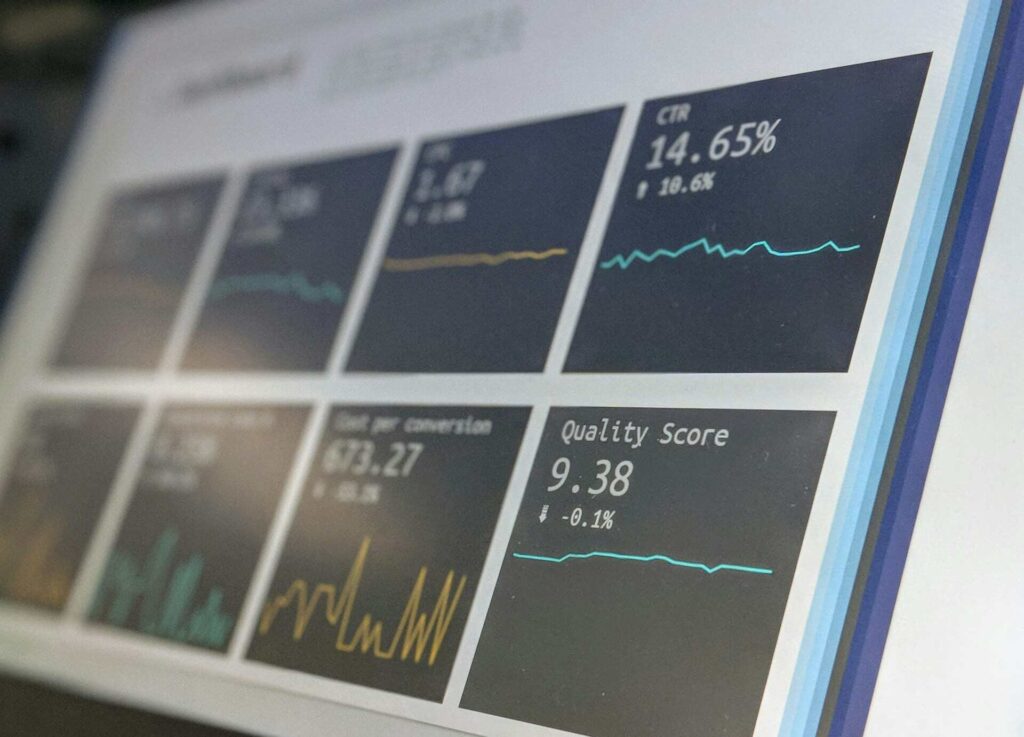In the quest for financial clarity, understanding ‘how to calculate AGI from paystub’ is paramount. At Check Stub Maker, we simplify this intricate process effortlessly with our intuitive pay stub creator.
First, you’ll start by summing up your total gross income, including wages and additional earnings. Then, you’ll determine typical deductions for annual general earnings, such as IRA contributions or student loan interest, to arrive at your adjusted gross income, or AGI for short.
Join us on this enlightening journey as we delve into a comprehensive discussion on how to calculate AGI from a pay stub, dissecting a sample calculation and uncovering the significance of this pivotal money-related metric.
What this article covers:
- What Is Adjusted Gross Income (AGI)?
- How to Calculate Adjusted Gross Income From a Pay Stub
- What Is an Example of Adjusted Gross Income?
- AGI Sample Calculation
- Is AGI Calculated Before or After Taxes?
- What’s the Significance of Adjusted Gross Income (AGI)?
- Comparing AGI with Other Income Calculations
- What Is Adjusted Gross Income on Paystub FAQs
What Is Adjusted Gross Income (AGI)?
Adjusted Gross Income (AGI) is a crucial metric used to ascertain taxable wages after accounting for certain deductions and adjustments.
Based on our first-hand experience, it reflects an individual’s or business’s total earnings minus allowable deductions, providing a clearer picture of their payroll situation. For instance, AGI considers educator expenses and student loan interest, among other deductions, providing a more accurate assessment of tax liability.
At Check Stub Maker, we understand the significance of AGI in financial planning. Our expertise in payroll services ensures precise income reporting, empowering people and businesses to make informed money-related decisions.
How to Calculate Adjusted Gross Income From a Pay Stub
Here’s how to calculate your AGI.
Determine Your AGI
Begin by totalling all your wage sources listed on your pay stub, such as:
- wages
- tips
- taxable distributions
These figures (including a pay stub with tips calculator) will give you your gross total income.
Report Your Gross Total Income
Your gross total income is the sum of all your earnings before any deductions or adjustments.
Drawing from our experience, this includes:
- wages
- salaries
- bonuses
- other sources of earnings
Determine Deductions For AGI
After obtaining your gross total income, deduct any qualified adjustments to wages, such as:
- educator expenses
- student loan interest
- contributions to retirement accounts
These deductions lower your taxable earnings, thereby reducing your AGI.
By calculating your AGI from your pay stub correctly using our services at Check Stub Maker, you’ll ensure compliance with tax regulations and gain expert insights into your financial standing.

What Is an Example of Adjusted Gross Income?
Adjusted Gross Income (AGI) is calculated by subtracting certain deductions from total income.
For instance, if a self-employed person earns $50,000 in a year and claims $10,000 in eligible business expenses, their AGI becomes $40,000.
As per our expertise at Check Stub Maker, this deduction reflects how the costs directly related to the business, such as buying office supplies or equipment, are subtracted before determining your AGI.
What Is Not Included In AGI?
Certain earnings types are excluded from AGI calculations, including:
- gifts
- inheritances
- certain retirement distributions
- tax-exempt sources like municipal bond interest
Based on our observations, these exclusions help streamline the tax calculation process, providing a clearer picture of taxable income.
AGI Sample Calculation
Let’s look at how you can use Form 1040 or an AGI calculator to decipher your adjusted gross income.
How To Use IRS Form 1040 To Calculate AGI
On IRS Form 1040, you’ll report your gross income and then list your above-the-line deductions on the appropriate lines. Subtracting these deductions from your gross income gives you your AGI.
After putting it to the test, we discovered that our paystubs and using IRS Form 1040 simplifies the process of calculating AGI for individuals or companies filing taxes.
How To Use An Adjusted Gross Income Calculator
Using an adjusted gross income Calculator streamlines the process by automatically computing your AGI based on the information you enter. These calculators factor in various wage sources and deductions to provide a precise AGI estimate.
Our team discovered through using this product that our check stubs maker is an invaluable tool for people who want a quick and reliable way to ascertain their AGI.
Is AGI Calculated Before or After Taxes?
AGI is calculated before taxes are applied. Our investigation demonstrated that AGI functions as the starting point for calculating your taxable earnings.
Above-The-Line Vs. Below-The-Line Deductions
Above-the-line deductions are subtracted from gross income to determine AGI.
These deductions include:
- contributions to retirement accounts
- health savings accounts (HSAs)
- student loan interest
Below-the-line deductions, on the other hand, are applied after AGI is calculated, which further reduce your taxable wages.
They include:
- standard or itemized deductions such as mortgage interest or losses to theft
- personal exemptions like charitable donations
By utilizing this knowledge and our service at Check Stub Maker, you can optimize your tax situation and potentially reduce your liability.
What’s the Significance of Adjusted Gross Income (AGI)?
Our research indicates that AGI serves as the foundation for determining taxable income, influencing:
- tax brackets
- eligibility for tax credits
- deductions
AGI reflects an individual’s or business’s transactional health, providing insights into wage sources, deductions, and overall monetary management.
Additionally, AGI plays a pivotal role in loan approval processes, serving as a measure of borrowers’ capability to repay debts.
Understanding AGI is vital for accurate tax filing and compliance with IRS regulations, ensuring our clients maximize tax benefits and avoid penalties.
By leveraging our expertise at Check Stub Maker, we empower our users to navigate tax complexities and make informed financial decisions when they create pay stubs with us.

Comparing AGI with Other Income Calculations
Adjusted Gross Income (AGI) is a critical metric for tax purposes, distinguishing itself from other earnings calculations in various ways.
Table: AGI Vs. Other Income Calculations
| Criteria | AGI | Gross Income | Taxable Income | Modified Adjusted Gross Income (MAGI) |
| Definition | AGI is total income minus certain adjustments or deductions | Gross Income represents total earnings before any deductions or exemptions | Taxable Income is AGI minus further deductions or exemptions, resulting in the amount subject to taxation | MAGI includes additional adjustments to AGI, such as specific deductions and exclusions, for certain tax purposes |
| Calculation | Subtract certain deductions from total income | All wages before any adjustments are made | Derived by subtracting further deductions from AGI | Involves additional modifications to AGI for specific tax considerations |
| Importance | Determines tax liability and eligibility for certain tax benefits | Provides a snapshot of total earnings before deductions | Indicates the portion of earnings subject to taxation | Used for various tax calculationsExamples include eligibility for certain deductions and credits |
AGI Vs. Gross Income
Through our practical knowledge, gross income represents the total earnings before any deductions or exemptions are considered. AGI differs from gross income by deducting specific adjustments before arriving at the final taxable earnings.
AGI Vs. Taxable Income
Compared to taxable income, AGI is the starting point for calculating taxes, whereas taxable income incorporates additional deductions and exemptions.
Our findings at Check Stub Maker show that AGI excludes certain deductions like retirement contributions and health savings account contributions, whereas taxable income considers these adjustments.
AGI Vs. Modified Adjusted Gross Income
Modified Adjusted Gross Income (MAGI) incorporates further adjustments to AGI, such as certain deductions and exclusions.
Our research indicates that MAGI is relevant for specific tax purposes, such as determining eligibility for certain tax credits or deductions, whereas AGI is more comprehensive in its tax implications.
What Is Adjusted Gross Income on Paystub FAQs
How Do You Find AGI If You E-File?
Based on our first-hand experience, you can locate your AGI from the previous tax year on your tax return from the IRS. If you filed electronically last year, your AGI should be accessible.
Alternatively, if you used our Check Stub Maker service, you can refer to your digital paystubs from the previous tax year, where your AGI is typically displayed.
Can You Find Adjusted Gross Income On Your W-2?
Typically, your W-2 form doesn’t directly display your Adjusted Gross Income (AGI).
However, certain deductions and pre-tax contributions, such as retirement plan contributions and flexible spending account deductions, are already factored into your W-2 earnings.
While your W-2 provides valuable information about your earnings, you’ll still need to calculate your AGI by incorporating additional deductions and adjustments, such as business expenses or student loan interest, to correctly ascertain your tax liability.

How Do I Calculate My AGI For A New Job?
You’ll need to consider various sources of income, including wages, bonuses, and tips, along with pre-tax deductions like retirement contributions and health savings account contributions when starting a new job. From there, you’ll subtract eligible adjustments from your total earnings to arrive at your AGI.
Our team at Check Stub Maker discovered through using this product that our paystub generator helps you keep track of your income and deductions accurately, making it easier to calculate your AGI for your new work role.
Can My AGI Be Negative?
It’s possible for your AGI to be negative in certain situations. For instance, if your deductions and adjustments exceed your total wages, then your AGI can be negative.
This might occur if you have significant deductions, such as business expenses or investment losses, that exceed your earnings.
While uncommon, a negative AGI can affect your tax situation, potentially resulting in a tax refund or reducing your taxable income to zero.
What Is The AGI If The Gross Income Is $100,000?
Determining your AGI with a gross income of $100,000 involves subtracting eligible adjustments from your total earnings.
In this context, eligible adjustments might include the following contributions:
- $5,000 for a retirement account
- $2,000 to a health savings account
- $1,000 in student loan interest
As such, you’ll subtract the $8,000 eligible adjustments from the $100,000 gross income, making the AGI $92,000.

Conclusion
In this blog post, we delved into the essential topic of using a pay stub deductions calculator to ascertain your AGI by understanding its significance in tax filings. With our user-friendly guide, you now have the tools to navigate your finances confidently.
Ready to simplify your payroll process and ensure accuracy?
Try our Check Stub Maker service today and streamline your payroll tasks effortlessly. Let’s make managing income a breeze together with our highly intuitive paystub creator!
If you want to learn more, why not check out these articles below:
- How to Calculate W2 Wages From Paystub
- Missing Paystub Calculator
- How to Calculate Medicare Wages From Paystub
- Social Security Wages From Paystub Calculator
- Would a Pay Stub Be Considered a Form of Secondary ID?
- What Is Looked at on Pay Stub When Applying for a Credit Card?
- Why Is It Important for a Person to Examine Their Pay Stub Information?
- Can a Bank Locate a Lost Deposited Check Using the Check Stub?
- How Does a Business with LLC Look on a Pay Stub?
- Can I Use a Pay Stub to Renew License?
- Does It Take 3 Pay Stubs to Get a Loan?
- New Employer Asking for Pay Stub
- Can a Person Transfer H1B to Another Employer with One Pay Stubs?
- Pay Stub for Cash Payment
- How I Got My Last Pay Stub If Employer Goes Out of Business




